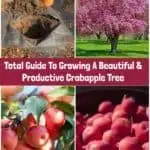
Apple trees are among the most widely cultivated plants in the world. With some 7,500 known cultivars within the Malus genus, the common apple tree (Malus domestica) we know and love produces sweet fruits that can be eaten raw or used in cooking. We know these types as orchard apples, eating apples, cooking apples, and culinary apples.
The other type of Malus is the wild apple, also known as the crabapple tree.
Producing tart fruits no larger than two inches in diameter, crabapples are often prized for their growth habit that is gorgeous no matter the season. Compared with common apples, crabapple trees are smaller in stature, very hardy, and far less work to maintain. And while perhaps sour fruits don’t appeal to you, there are plenty of things you can do with crabapple fruit!
5 Benefits of Growing Crabapple Trees
Crabapple trees offer a few practical benefits in addition to their good looks.
1. Crabapple Trees Provide A Beautiful Display for Every Season
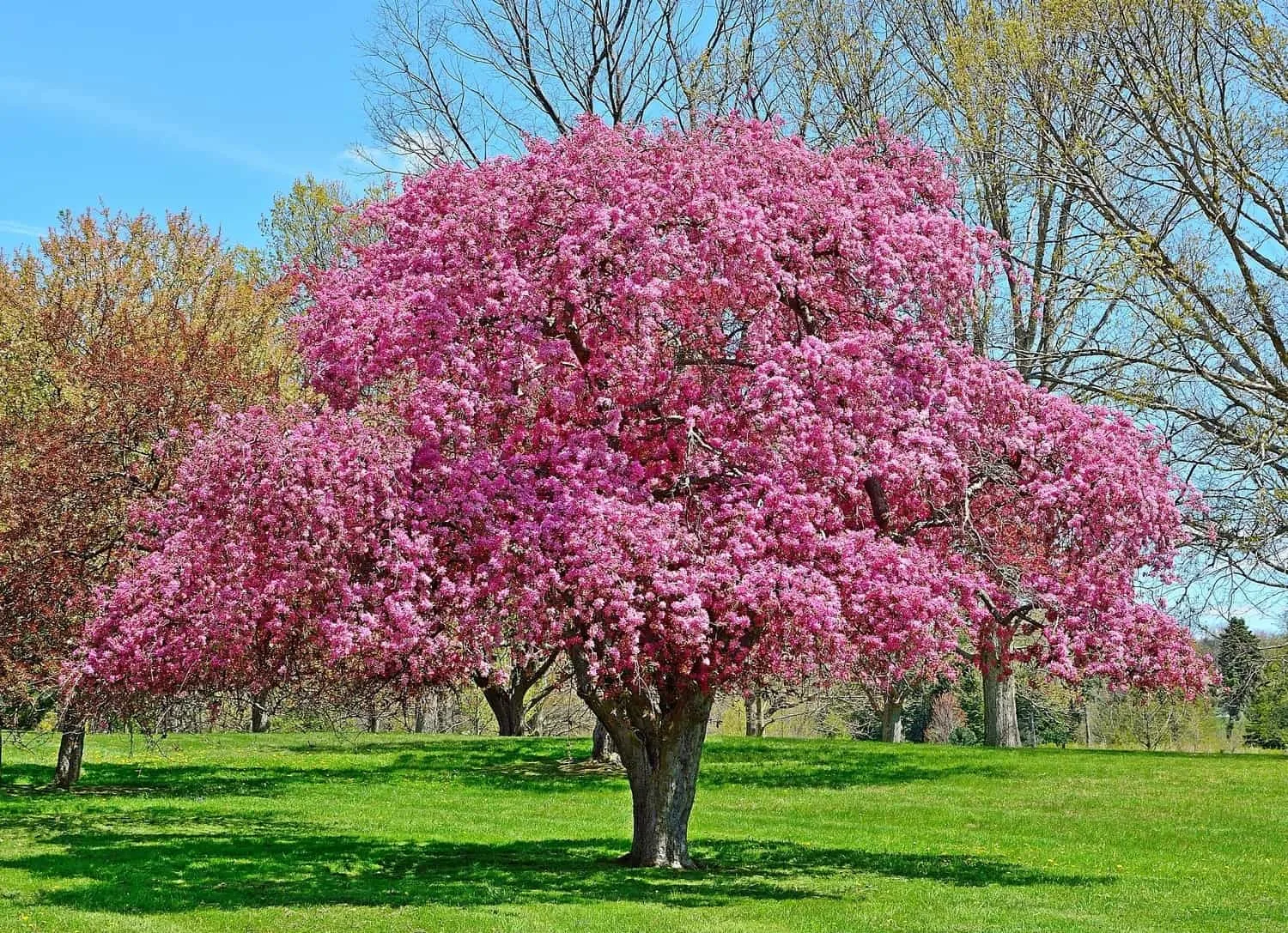
An early harbinger of spring, crabapple trees bloom profusely in an amazing display of fragrant white or pink blossoms.
Once pollinated, the summer months see crabapple trees turn to fruit production and a return to a lovely canopy of green leaves. In autumn, it makes another dramatic transformation with bright red, orange, and yellow foliage.
When its leaves drop in winter, the dense, knotty, gnarly, spiny branches (often still bearing fruit) will continue to provide visual interest in snow covered landscapes.
2. Crabapple Trees are Pollinator Magnets
During their glorious springtime flowering period, crabapple trees attract bees and other pollinators to your yard. Not only will this help save the bees by providing them with an excellent source of nectar, attracting pollinators to your garden boosts the production of other vegetable and fruit crops you grow.
3. They are Excellent Companions for Orchard Apples
Orchard apples need to be pollinated by a second type of apple tree of a different variety in order to produce fruit. Since crabapple trees are such heavy bloomers, they are a great option for cross pollinating your eating apples.
Crabapple trees can be interplanted between the orchard apple rows, or you can take some branch cuttings while the crabapple tree is still in bloom and set them strategically around the orchard.
For best results, ensure your orchard and crabapple varieties are matched in blooming times by pairing up early, mid, and late blooming cultivars.
4. Crabapple Trees Are Super Productive
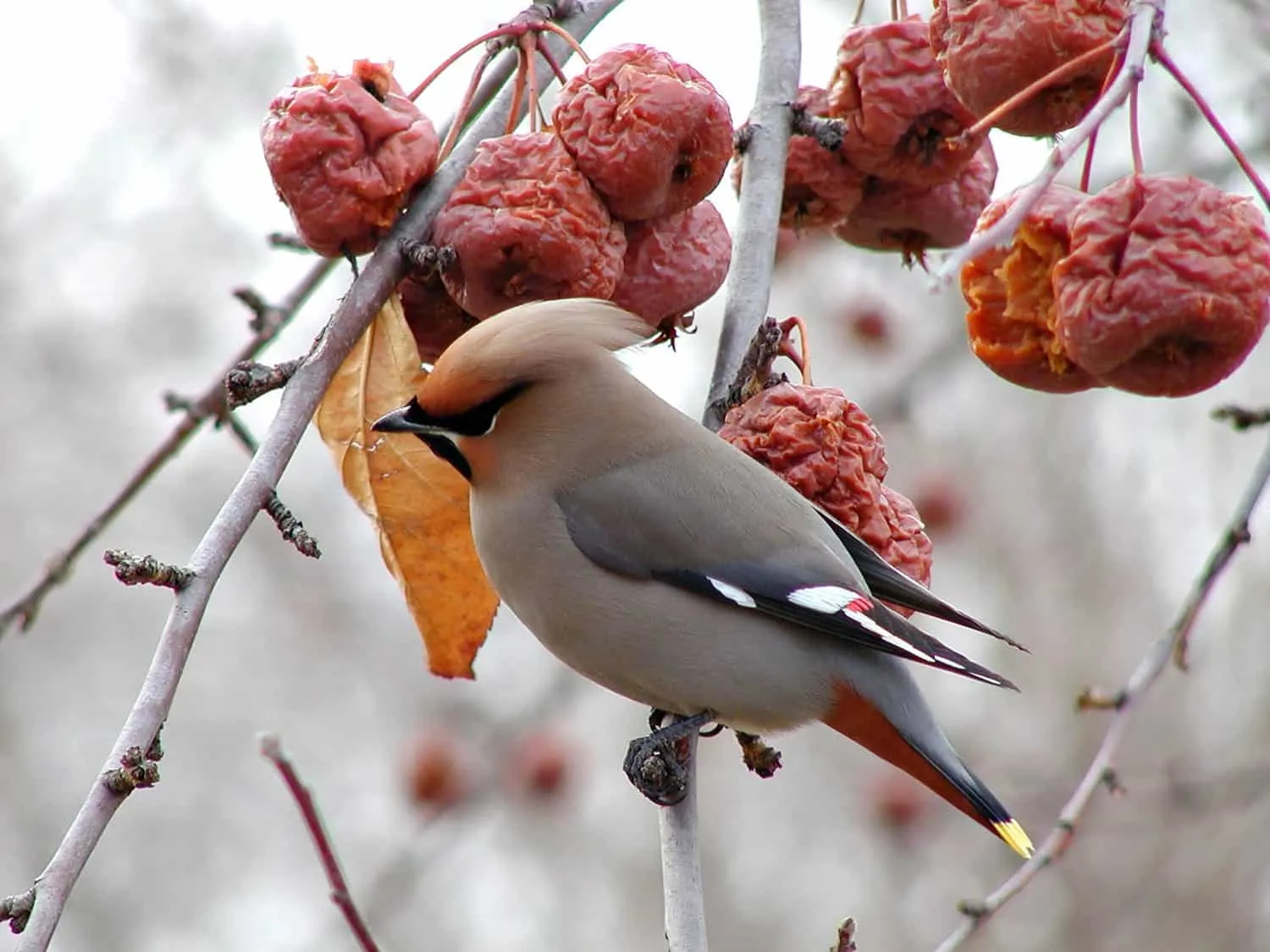
Once established, a mature crabapple tree will produce a massive amount of fruit each autumn.
Fruits can be found dangling in numerous clusters upon each branch of the tree, in a growth habit that looks more reminiscent of a berry bush than a traditional apple tree. When you’ve gotten your fill at harvest time, leave the rest of the crabapples on the tree to provide a feast for wild birds.
5. Crabapple Trees are Very Low Maintenance
Unlike the domestic apple, wild apple trees are incredibly hardy and don’t need much beyond watering and the occasional pruning to remove suckers that appear at the base of the trunk.
While crabapple trees aren’t particularly prone to pests and disease, you can purchase disease resistant varieties to minimize the chances of apple scab, fire blight, and apple rust. Pests like Japanese beetles, caterpillars, and apple maggots will rarely do enough damage to impact the health of the tree.
How To Choose A Crabapple Variety
There are around 35 species of crabapple tree and hundreds of hybrids. When choosing a variety, consider these factors:
Size: Crabapple tree cultivars range from 8 to 40 feet in height and spread at maturity.
Shape: The growth habit and form of crabapple trees varies widely, from upright, rounded, oval, weeping, narrow, broad, spreading, low, and semi weeping.
Fruit Persistence: While many varieties hold their fruit into the winter, some will drop their crabs early and make a bit of a mess.
Fruit Edibility: Because crabapples are mainly bred for beauty, some cultivars are better for fruit eating than others. Some crabapple varieties produce crabs that are sweet enough to eat right off the tree, while others are better as cooking apples. In general, the smaller the fruit, the more sour it will taste.
Hardiness: Most crabapple trees are hardy in USDA zones 4 through 8.
8 Best Types Of Crabapple Tree To Consider
Since there are so many types to choose from, here are some choice picks that will add color, fragrance, and much fruit to your outdoor spaces:
Brandywine
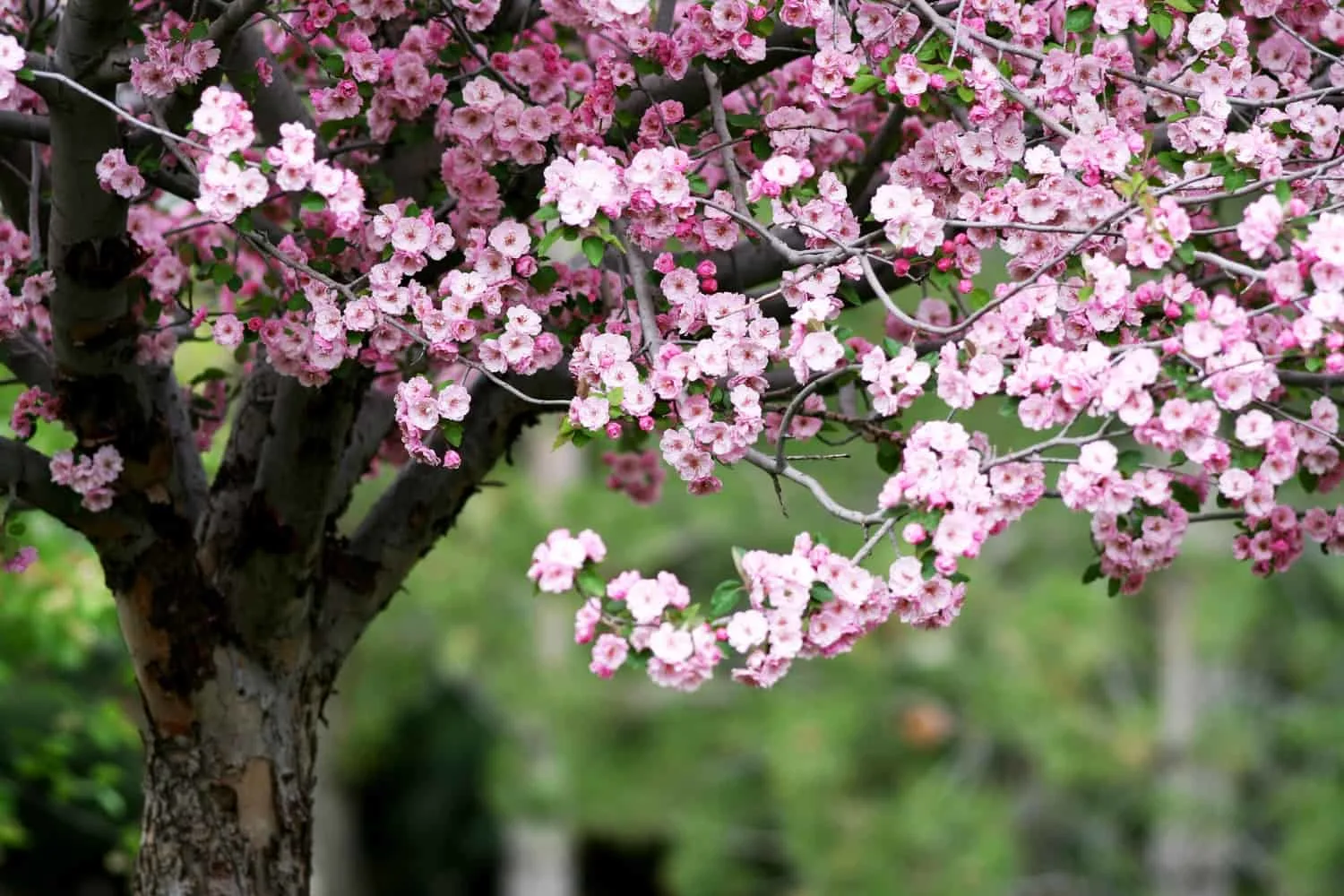
An early spring bloomer, Brandywine is a lovely sight to behold. With masses of aromatic bright pink double flowers that look like roses, it has an upright, broad, and rounded shape that can reach a height of 15 to 20 feet tall.
Bearing yellowish green crabapples that can be prepped into jellies and jams, these fruits will drop so avoid a messy clean up by harvesting as they ripen. The leaves are dark green in summer and turn red orange in autumn.
Dolgo
A well rounded variety, Dolgo blooms early in the season with long lasting, fragrant white flowers in an upright, open, and spreading shape.
Growing to a height of 30 feet, the glossy green foliage turns bright yellow in autumn. Large red fruits are sweet enough to be eaten raw and persist into winter.
You can purchase a Dolgo Crabapple tree from Nature Hills Nursery here.
Purple Prince
Purple Prince is a fast grower with an elegant upward spreading growth habit that can reach 20 feet tall and wide.
Its gnarled and twisted canopy comes alive in mid spring with bunches of dusty pink single blossoms. These are followed by half inch, purplish blue crabs that will cling to the tree into wintertime. Fruits are bitter raw but are good cooking apples. Leaves start out deep green and turn yellow before they drop at the end of the season.
You can purchase a Purple Prince Crabapple tree from Nature Hills Nursery here.
Adirondack
An award winning crabapple tree, Adirondack is an excellent choice for smaller garden spaces. Growing to just 12 feet in height, it produces a plethora of large white blossoms in late spring that develop into glossy red fruits come fall.
Though fruits are very bitter, your backyard birds will love them. Crabapples will persist into winter. Foliage is green most of the season, turning yellowish in autumn.
Prairiefire
As its fiery name would suggest, Prairiefire is a bold and beautiful specimen that explodes in dense clusters of deep pink to vibrant red blooms, each 1.5 inches round, in mid to late spring.
Fruits are small purplish red, and persist into winter, but are too bitter for human consumption. The pointed leaves start out purple tinged in spring, become dark green with reddish veins in summer, and turn vibrant orange in fall.
Snowdrift
Heaving with dense clusters that dangle from each branch, Snowdrift blooms generously with pure white, gently scented flowers in mid to late spring. Blossoms mature into a multitude of orange-red crabapples, about 3/8” in diameter, that do not drop to the ground.
Fruit is best left for the birds. With a rounded, upright canopy, its ovate leaves are dark green and glossy in summer, turning golden yellow in autumn.
Louisa
A weeping variety, Louisa is a graceful beauty with branches that cascade to the ground. In early spring, it produces delicate and fragrant single flowers tinted in pink. Tiny, pea sized fruits, yellow in color, cling to its limbs throughout winter. Its summertime dark green leaves transition to yellow and orange in fall.
American Crabapple
Among the few crabapple trees native to North America, the American crabapple (Malus coronaira) can be found in the wilds growing in woodland openings and thickets on the eastern side of the continent. Because it is a native plant, it is especially valuable as a food source for North American bee populations that are, like the more publicized European honeybee, facing extinction.
In addition to its ecological merits, the American crabapple is a stunner as well, with a shorter trunk and an often crooked, broad, irregular crown. It flowers in late spring with fragrant five-petal blooms that start out light pink and turn white over time. The edible fruit is fragrant as well, green at the outset and yellowing at peak ripeness.
Other excellent edible crabapple trees include Chestnut, Centennial, Hopa, and Whitney. For more varieties of crabapple, check out these comparison charts here and here.
Where To Buy A Crabapple Tree
Your local garden nursery should have a supply of crabapple trees that are ideal for your growing area – but it is also now easy to purchase a crabapple tree online.
Nature Hills Nursery provide a wide range of crabapples and ship across the US.
You can browse their selection of crabapple trees here.
How to Plant a Crabapple Tree
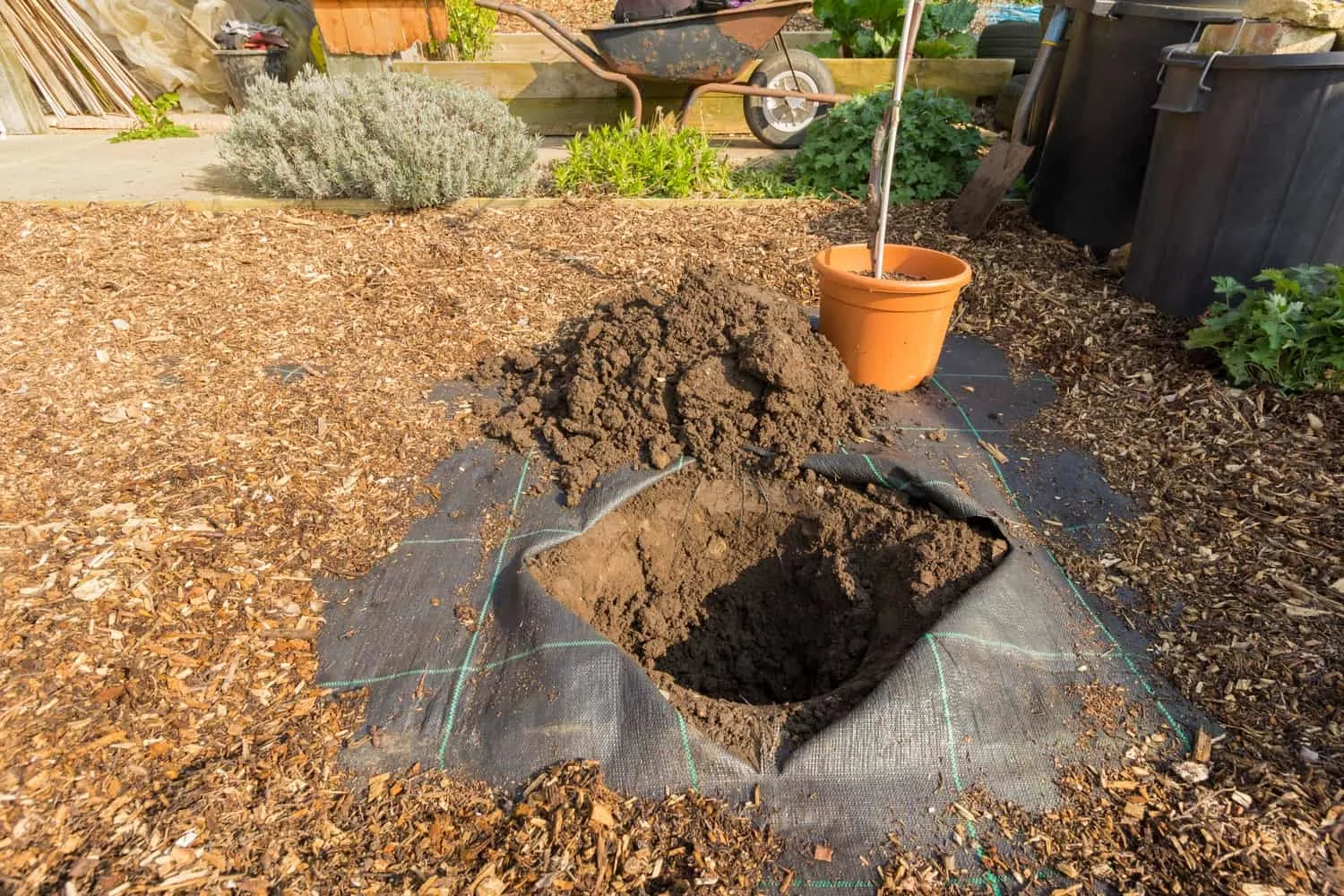
Choose a site for your crabapple tree that receives at least six hours of direct sunlight each day. You’ll want to select a spot that has rich, well draining, slightly acidic soil. Also bear in mind the size the tree will eventually become at maturity.
If you purchased your tree balled and burlapped or in a container, you can plant it in spring, summer, or fall. Bare root crabapple trees should only be planted in early spring.
Prep the site by removing all grass in a 4 foot diameter circle. Dig a hole 2 feet deep and about twice the diameter of the root ball.
To enrich the soil, mix peat moss and compost into the soil you just dug out. Begin filling the hole with the soil mix, just enough so that the tree’s trunk is planted at the same depth it was when it was in the pot.
Place the tree in the hole and keep adding soil around the root ball until the hole is partially filled, gently tamping it down with your foot. Water the site well, allowing it to drain completely.
Continue filling the hole the rest of the way with the soil mix. Firm the soil’s surface, but be careful not to compress the soil. Finish by giving your new crabapple tree a thorough watering.
How To Care For Your Crabapple Tree
Watering
During its first year of growth, crabapple trees need regular watering. Keep the soil evenly moist over the root zone, about an inch per week. Once it is well established, crabapples are very drought tolerant and shouldn’t need supplemental watering unless the season is extremely dry.
Fertilizer
Crabapple trees shouldn’t require fertilizer if you planted it in nutrient rich soil. If you notice stunted growth or sad looking blooms or fruit, give them a boost by working some finished compost into the soil around the base of the tree.
Pruning
Crabapple trees do not need to be trained or thinned. Prune only in early spring to remove dead branches and suckers.
Companion Plants
While you can simply mulch the bare area around the tree, crabapples have a mutually beneficial relationship with many other plants. Bulb plants like daffodil, daylily, garlic, and onions have shallow roots that can help suppress weeds; since they go dormant in the summer, they won’t be competing with the crabapple tree for nutrients.
Planting dill, fennel, coriander, and nasturtiums helps to attract pollinators and other beneficial insects while repelling pests that can harm your tree.
You can also passively add nutrients to the soil with comfrey, yarrow, and alfalfa; simply chop these down and let them decompose into the soil.
Harvesting Your Crabapple Tree
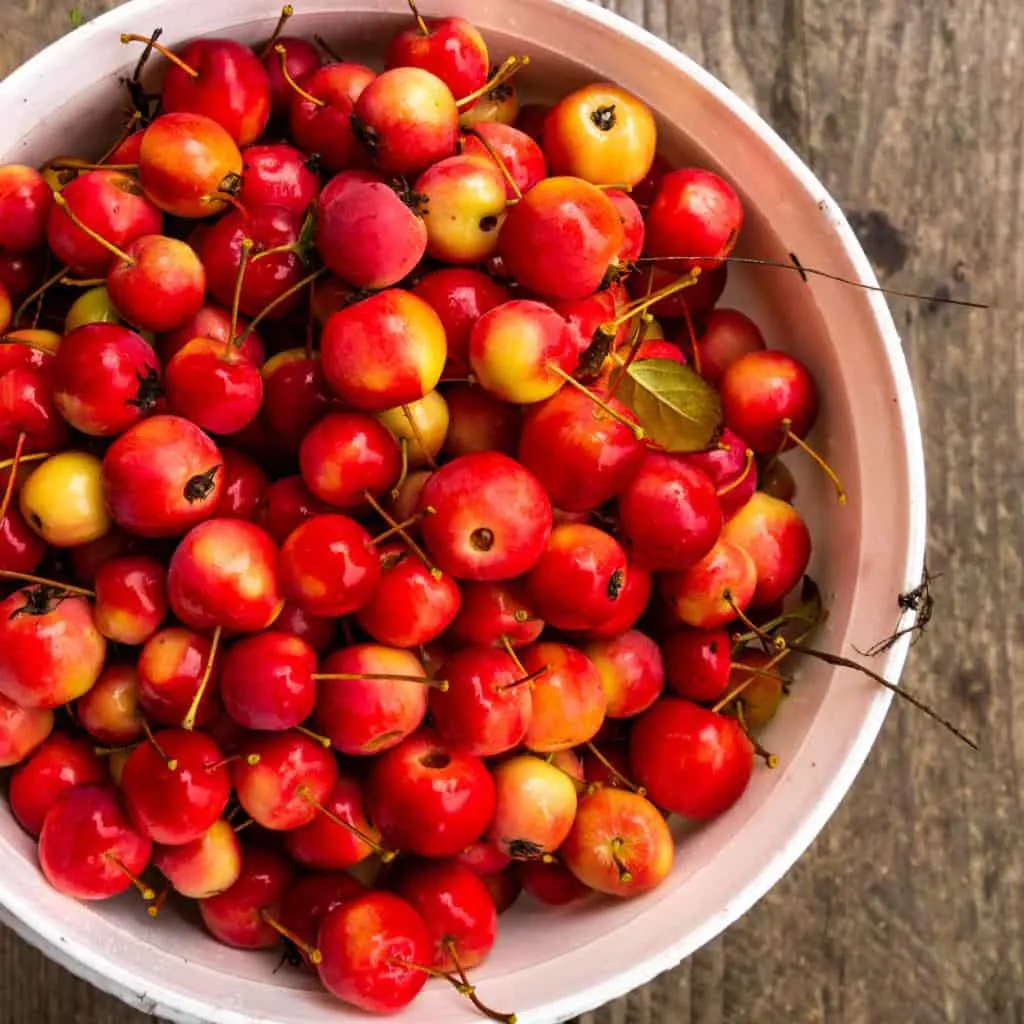
Crabapple trees are typically ready to be harvested from September to November. Ripe crabapples should be both tart and sweet. Pick your crabs too early, though, and they will likely be quite bitter.
To test for ripeness, slice open a crabapple or two and take a look at the seeds. Seeds that are light in color – white, greenish, or beige – usually indicates it needs more time to mature. Dark brown seeds are one indicator that the fruit is ripe and ready to be picked.
Another way to tell ripeness is the fruit’s color. Depending on the cultivar you chose, the crabapples should be a vibrant shade of red, yellow, green, or purple. Test the firmness by taking a bite. The texture and flesh should be easy to sink your teeth into. If it’s too hard, it needs more time to develop.
Crabapples will be at their sweetest when daytime temperatures are still warm but night temperatures are cooler, down to 32°F. If your crabs are frozen at harvest, let them thaw out before handling them.
You can preserve your crabapples for later use by freezing them whole. Simply wash the crabs, removing the stems and blossom ends, and place on a cookie sheet in a single layer in the freezer. Once they are completely frozen, transfer them to an air tight container.
15 Ways to Use The Crabapples You Harvest
Do you already have a thriving crabapple tree and looking for ways to use the fruit? Then take a look at our follow-up article revealing enough crabapple recipes to satisfy even the most abundant tree.
Read Next: 15 Delicious Crabapple Recipes You’ve Probably Never Tried

Get the famous Rural Sprout newsletter delivered to your inbox.
Including Sunday musings from our editor, Tracey, as well as “What’s Up Wednesday” our roundup of what’s in season and new article updates and alerts.


